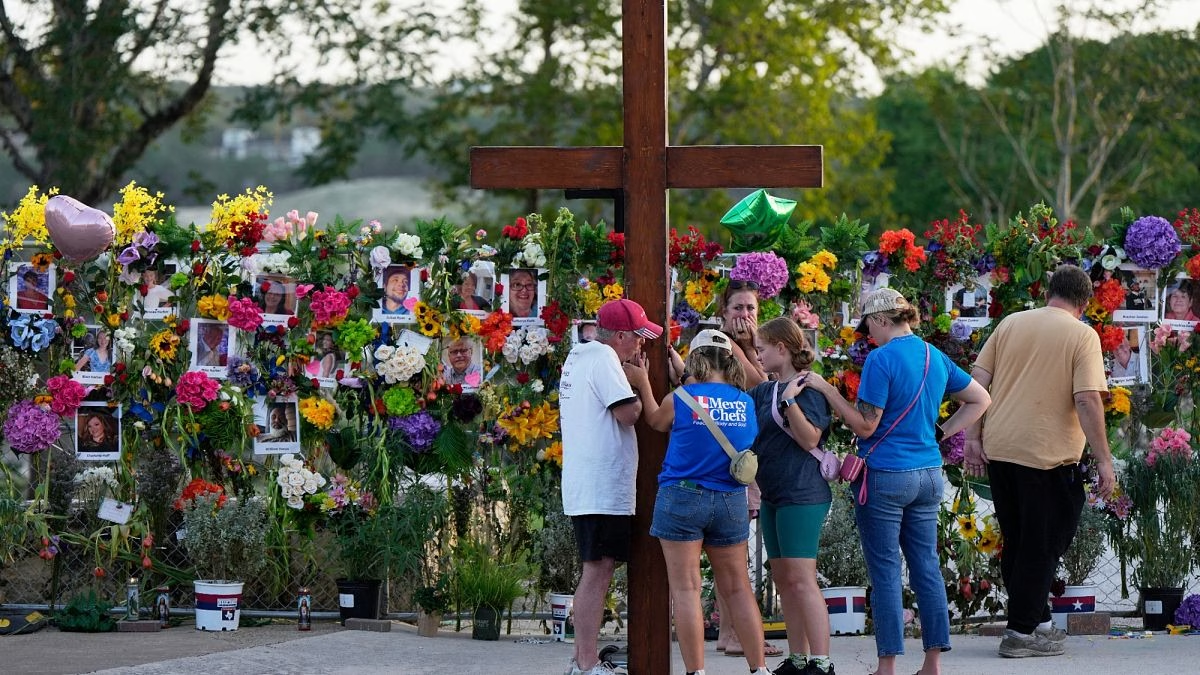Published on
Across central Texas, shock has turned to grief, with at least 120 deaths recorded due to flash flooding, and over 170 individuals still unaccounted for.
Residents have adorned a fence in the Hill Country area with photos of the deceased alongside candles and flowers, transforming it into an ever-growing testament to the tragedy that has befallen the region.
Among the victims are three friends who were meeting up for the July Fourth weekend, 8-year-old sisters who were at a summer camp, and a 91-year-old grandmother.
Although authorities are reviewing lists of the missing, these numbers can fluctuate in the immediate aftermath of such disasters.
In response to the catastrophe, Texas has established disaster recovery centers, where survivors can register for federal assistance and other support, including grocery store gift cards for income-qualified households and financial aid for hotel stays and utility bills.
Continuing their efforts, search and recovery teams are meticulously sifting through debris and riverbanks, with nearly 100 victims already identified in Kerr County.
Survivors recount miraculous escapes from the night-time flooding, recounting how they climbed onto roofs to avoid the rising waters, witnessing cars being swept away and hearing desperate cries.
President Donald Trump is set to visit Texas, where he has pledged to provide all necessary relief for the state’s recovery.
Kerrville resident, Margaret Marrell, expressed her appreciation for the President’s intention to offer support by visiting and doing what he can to help the community.
What happened?
The Guadalupe River in Texas surged over eight meters in a mere 45 minutes last Friday, leveling homes, camps, and vehicles as continuous heavy rains extended into the weekend, inciting additional flash flood warnings.
Criticism has arisen questioning whether adequate warnings were given to camps and residents in an area known for severe flash flooding, but officials argue against such reproach, stating that the intensity of the downpour, which equated to months’ worth of rain, was unexpected.
Texas Governor Greg Abbott has called on state lawmakers to approve funding for new warning systems and emergency communication networks in flood-prone regions, emphasizing the need for better preparation in the future.
Both AccuWeather and the National Weather Service issued warnings about potential flash flooding hours before the devastating event.
Scientists have been warning for years that climate change is leading to increases in extreme weather events, including flash floods, worldwide, due to warmer oceans and a wetter atmosphere.
This phenomenon is observed across various regions, from Europe to the US, where stronger and more frequent storms are becoming the new norm.




